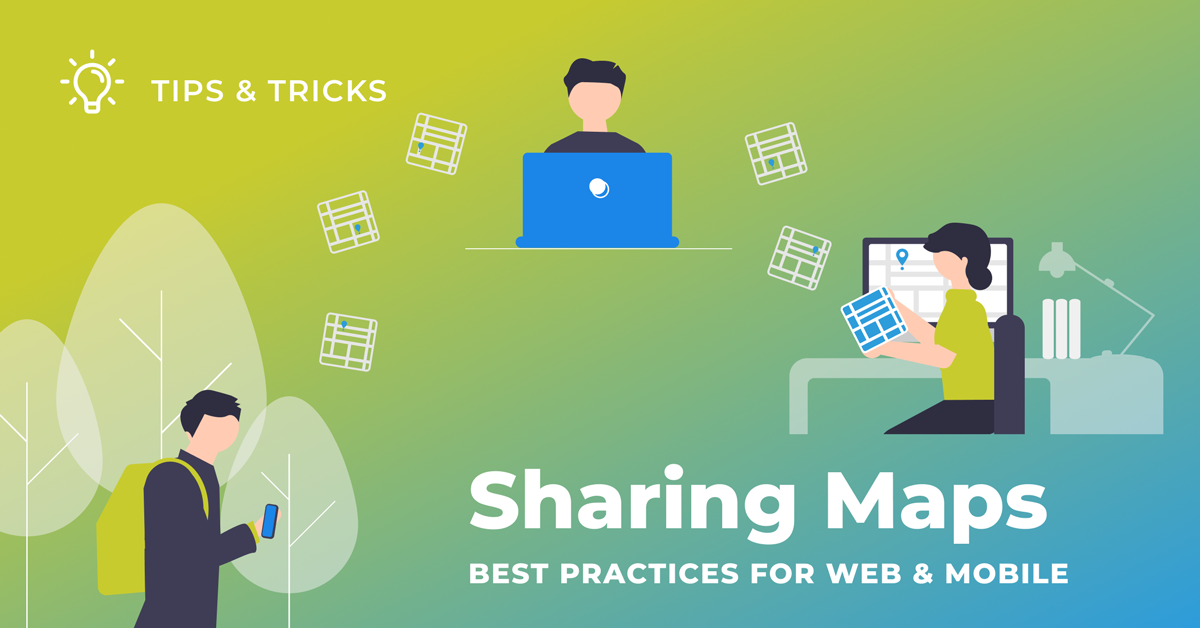
When sharing your maps with other people and looking for the right tool for the job, it’s important to define who the end-user will be and how they access the map. Do you plan on making your maps available to the general public? Are you sharing critical information with stakeholders and require their feedback? What’s the information you’re looking to communicate?
Who are you sharing your maps with?
Knowing who’s looking at your maps is the first step when making them – for example, preparing a map for public use might require you to consider the visual aspect and how to keep a user’s attention. One thing to keep in mind, public maps have a diverse viewership, and you should make sure that anyone can understand what you’re showing. The simplest way to do that is making sure your map is easy to use, and your symbology is as straightforward as possible.
A business user, on the other hand, will have different requirements. They understand the data and know what to expect, but they might need more control over what’s visible on the map or will want to provide you with their feedback. In that regard, access control should be one of the main focuses, especially as in a business setting, we’re usually talking about private data. You should also ensure that what they’re seeing is always the most recent iteration by providing a single point of truth for your data. Giving the user additional tools to help them in their decision-making process is a bonus.
In short, the content of your maps won’t always be the same, the users’ requirements can be dramatically different, and you might want to replace one functionality with another based on the project you’re working on.
Ditch the paper
We mentioned that defining who is viewing your maps is essential. Still, you should also take into consideration how they’re accessing it.
Paper maps used to be the standard back in the day, and while they look great, there’s much less use for them in today’s environment. Making your map digital should be your first step. It goes without saying, but unless you want to keep printing new maps day in and day out, going digital is how you will reach the most people, make sure that what you’re sharing is relevant and up to date, and share your maps the fastest.
Unlike paper maps, digital ones give you more flexibility not just in the content you’re sharing but also in the way they’re being shared.
Web map vs Mobile map
When sharing digital maps, it’s important to think about what device the person accessing the map will be using. This should also play a role in your map optimization process. There are two main categories we can single out here – web maps and mobile maps, and taking this into consideration will help you provide a better experience to your map viewers.
A web map is intended to be viewed on a larger screen. This extra real estate allows you to include more information, not just in terms of the different layers you’d like to show. If you want to make your maps stand out and help the user understand your data better, consider creating a portal or custom dashboard that uses interactive maps and charts, graphs, filters, or any other content.
maps
For a mobile map, on the other hand, simpler is better. You can still give the option to include more (see our list of map essentials below), but don’t have that be the starting point (you don’t want to crash someone’s phone just because your map is ‘too heavy’). Decide what the most important piece of information you’re showing is, and make sure that it is as clear as possible – the rest is up to the map viewer. And while an online environment enables you to push any new changes directly to the viewer, the situation is not the same for mobile users. They might find themselves in remote areas with poor reception, so make sure the map will work just as well for them offline.
Map essentials
You’ve defined who your end-user is, you know how they’re accessing the map you would like to share with them – so what are the tools or features you need to make this happen? We’ve highlighted a couple of essentials that make a difference:
- Don’t be limited with the format
Data is the first step in map-making. Suppose you’re working with spatial data regularly. In that case, you’ll know that data comes in all different formats – from a humble Excel spreadsheet to a pretty standard Shapefile, to a more complex and custom PostGIS database. For any given project, you might be using just one of these or all of them, and it’s important that whatever tool you’re using allows you to do just that. While a simple static map (where data doesn’t change often) will be just as good whether you create it from a CSV file or Shapefile, in order to achieve a single source of truth environment for projects where it’s of utmost importance that all of the data is up-to-date (and not a version of a copy from a dataset from two weeks ago), using sources like Web Feature Service or external databases is key. Supporting different data source types is simply a GIS necessity.
- Make sure your symbology is spot on
The first thing that the person you’re sharing your map with will see is how you’ve presented your data. It’s the most significant difference between having easy-to-understand data and a mess.
Make sure that the platform you’re using has a robust way to change the symbology of your data. This can be done automatically for you or through complex expressions that define your categories based on different values. Ideally, you’d have the option to do both.
We can talk about data visualization methods all day, but if you don’t have that long, just take a look at our Mini School series. We’ll guide you through best practices and show you how to achieve the look you’re going for.
- White-label it
Setting up a clear and understandable symbology is the first step in ensuring your message is delivered, so why stop there. Make your maps a part of a custom experience and add your branding to the platform you’re using. A good solution will allow you to do that quickly and easily, without the need to learn to code (or hire a developer). Consider adding custom features such as filtering tools, additional data in the form of charts and graphs (a dashboard), or simply link to your main webpage.
- Layer list – leave the decision to the map viewer
Regardless of who you’re sharing maps with, you’ll likely have plenty of data that you’d like them to see. There’s a point to be made here about not overcrowding your map to make sure the key data you’re bringing to light is not lost. However, instead of trying to find that thin line between ‘just right’ and ‘too much’, you can simply give the person the option to choose what they’d like to see by giving them the opportunity to turn on (or off) layers of interest. Having a layer list on your map will allow you to better organize your data (that’s why we have folders) and enable the person with who you’re sharing your map to create their own unique view with the data they’re looking for.
You don’t want to be overwhelmed by numerous layers on the small screen of your phone, so having a layer list is especially important in mobile map sharing. Less is more in this case, and being able to turn the layers on and off at will is how you make your map useful.
- Allow feedback, but don’t sacrifice control
It’s not just about sharing the maps – think about whether you need to receive any feedback in return. Do you want public opinion on the newly proposed residential area? Do you need to give the client a way to comment on specific data you’re sharing with them?
Defining what kind of access a user has is crucial, especially if you’re dealing with sensitive data. Is it view-only? Do you want someone to download this data? Either way, you want to make sure that you have full control over giving access permission and be flexible in the way you’re getting the feedback you need. This is true both for web and mobile apps.
- Go across platforms
One way to ensure you can get feedback from different users is to make your map accessible across platforms. Plenty of tools will lock you within their own ecosystem, but the reality is that there are so many to choose from you’ll have a difficult time ensuring that absolutely everyone you’re working with is using the same platform. A simple solution is to use Web Map Service or Web Feature Service, so make sure the tool you’re using can easily generate them.
This list might seem like a lot to ask, but these features are simply the basics, so the platform you use should tick all the boxes. Luckily, we’ve you covered – our cloud-based apps ensure you can easily create maps optimized for web and mobile sharing. Not only that, you still have the option to go the extra mile and fully customize the experience.
Maps are at the core of what we do, so we’d love to hear from you if you’d like to discuss ways in which your maps can be optimized for sharing. And if you’re ready to take these tips and implement them in your next project, get started by creating your free trial account.






